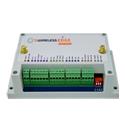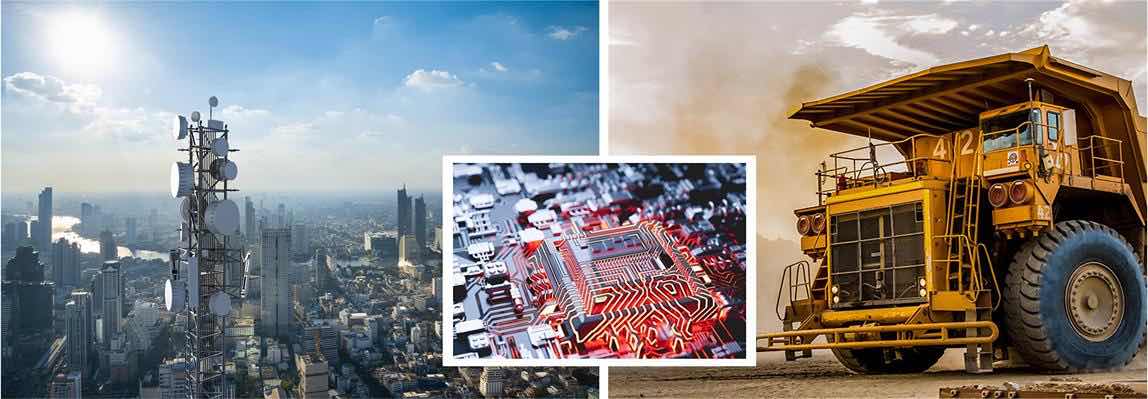
Why Cat1.bis is so popular for new hardware designs.
Many of our medical, industrial and transportation customers leverage our design and manufacturing experience in integrating cellular and other wireless technologies (BLE, Wi-Fi, LoRa, Satellite) into existing or new assets/machines/instruments/vehicles. This newly “connected asset” then allows for a transition from manual “planned maintenance” to some level of remote monitoring and/or maintenance (even predictive maintenance in advanced situations). This backend operations transition typically improves the efficiency/automation, safety, and sustainability of a business operations in some way as an ROI (Return On Investment). To enable reliable remote bi-directional connections from these end devices into a central remote operation center (backend cloud operations), its critical to select the correct connectivity for the specific application. On step “A” of the connected design integration “A to Z” journey, our team(s) need to deeply understand the customer use case and user journey and then systematically and methodically down-select the correct wireless technology to truly provide a reliable backbone connectivity service, sometimes leveraging existing, proven hardware building blocks. Hyper context awareness of the specific customer/user/regulatory domain is essential to truly understand the product connectivity requirements and its typically never a “one size fits all” ready-made or “off the shelf” device so understanding throughput/power/cost/latency/security/longevity requirements of any given device/application and working “hand and glove” all the way with the customers engineering and operations teams is necessary to achieve a successful outcome, typically deploying globally certified cellular connected device(s)/asset(s).
Enter Cat1.bis.
Recently a “subtle but significant” new cellular technology option has become readily available called Cat1.bis and it is quietly but rapidly being selected for many new connected hardware designs. Whilst Cat1.bis has been overshadowed, out-marketed and significantly out-hyped by 5G, Cat1.bis is now being architected into many new connected products and this is quite interesting (5G in reality thus far for M2M/IoT has only delivered on the “network access/RAN” side of things rather than any advanced “core network” features such as lower latency and network slicing originally promised, albeit that is changing now with 5G private networks and as the technology matures). In the meantime, Cat1.bis (and very often with a hardware footprint compatible CatM option) will continue to enjoy many design wins in the near future. The “bis” in the term “Cat1.bis” is a Latin word meaning “second time round” and it’s a “single antenna” version of LTE Cat 1 that meets many low to mid speed connected device requirements whilst simplifying complexity and cost of hardware design. This means simpler and lower-cost chipset/module/device/firmware designs whilst still having the same handsome throughput specifications as the original LTE Cat 1. See Figure 1. Newer Cat1.bis chipsets such as the Qualcomm QCX216 can even support features such as video streaming and voice, similar to LTE Cat 1. Of course, key to all of this is the fact that a Cat 1 network can enable Cat1.bis devices without any network change or upgrade. There is a huge body of knowledge online (GSMA and 3GPP for starters) that can be used to evaluate the pro’s and cons of various low, mid and high speed cellular technologies for M2M/IoT but I wanted to focus on Cat1.bis specifically. For connected products where a single global SKU is desired (again enhancing backend processes/operations),“coverage and cost” are king and this could make Cat1.bis “a real Cat amongst the other pigeons in Figure 1”.
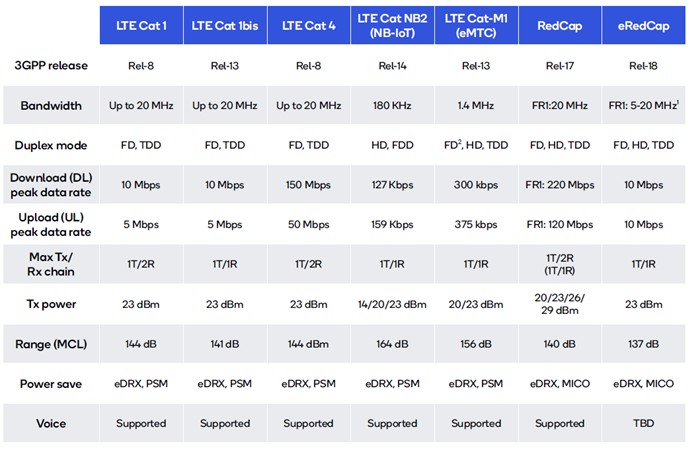
Figure 1 – Characteristics of IoT Standards (Source Qualcomm)
Why is Cat1.bis so popular in 2024.
For those who have been using cellular technology in connected hardware devices (M2M/IoT) for 20 years or more, you will know all about the advantages of using global LTE Cat1 Module (the ultimate global cellular technology today with ~800 supported networks worldwide) combined with fallback 3G/2G (now fading/sunsetting technologies). At a glance it’s easy to miss the significance of Cat1.bis but for those who toiled with integrating 2G GSM (from year ~2000), then upgrading to 3G UMTS (from year ~2004) and upgrading again to 4G LTE (from ~2013), in the pursuit of ubiquitous global connectivity, will remember the significant commercial and technical leaps required. On the hardware materials (Bill Of Materials) costs side (Approx. ~$10 extra per 2G -> 3G -> 4G leap) to years of design/manufacturing cycles costing typically hundreds of thousands of dollars NRE (Non-Recurring Engineering), it was such a big plunge each time that it was often carefully considered for many years by engineering/operations/procurement teams. Often the cellular chipset or modem or module was the highest cost BOM item in the connected device hardware design (usually still is today) and the higher the volume of manufactured units, the bigger the “commercial” decision to jump up a technology. On the NRE side, 4G LTE Cat4/Cat1 came with a lot of new bands and significant higher bandwidth performance (mostly overkill for low/mid speed apps) but Cat4/Cat1 was a “2 antenna” technology, so required 2 antennas (Main and Diversity antennas) to achieve such bandwidth performances. Aside of cost, the arrival of 4G LTE also brought many new frequency bands (~15 bands usually for a typical global 4G LTE Cat1 module) so designing antennas into 4G LTE Cat1 products was more complex and usually required specialist RF expertise in order to meet the performance requirements of gold standard MNO’s (Mobile Network Operators) like AT&T and Verizon in the US. It seems now, that Cat1.bis chipsets got the balance right from a complexity/cost/coverage/power perspective and you will also see Cat1.bis modem chipsets typically embedding MCU’s (Arm M3/M4) with an RTOS (usually something like FreeRTOS) inside the modem (thereby bringing lower power/cost), rather than higher power/cost MPU’s (Arm Cortex A7) typically running a Linux OS in traditional Cat1/Cat4 chipsets. In my experience, several high volume real world connected devices run most of network stack middleware/firmware (MQTT/HTTP/COAP/TLS/TCP/IP) on the device host processor (and PPP mode to modem) and avoid using the middleware on the modems themselves, it always seemed “lobsided” having such a powerful and capable application processors such as Arm Cortex A7 running only the radio modem communications, whilst device developers grappled with fitting most of the network middleware/firmware onto external host MCUs/MPU’s (for long term device security/maintainability/flexibility reasons). So with Cat1.bis, this sometimes lobsided legacy architecture (resource constrained host MCU running device middleware/security/app code, with a high power Linux capable Modem chipset running the cellular radio stack) has been fixed to some degree with the Cat1.bis modems now embedding lower cost/power MCU’s and allowing more BOM cost to be directed into the host MCU where it’s really needed and the middleware and applications likely reside, thereby, Cat1.bis modems are again “right-sized and right-costed” for the job.
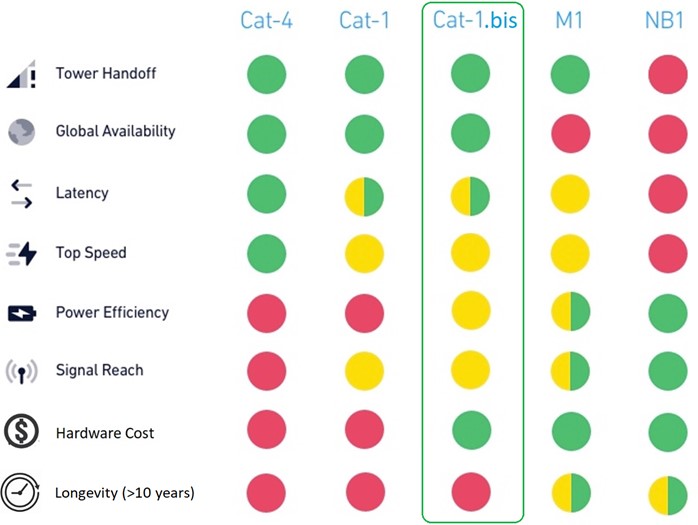
Figure 2 – Example High Level Technology Decision Matrix (Cat1.bis good on global cost and coverage)
Conclusion
Developing, deploying and maintaining a country level or even region level (Europe or North America) fleet of connected devices is complex. Mastering “Truly Global Connectivity” from a device hardware and software/firmware point of view is a challenge particularly in the following areas:
- Cellular chipset/module/antenna hardware
- Reliable and updatable device software that is globally compliant and robust on all networks
- Various categories of certifications as seen in Figure 3
- Volatile and dynamic inter country and carrier network roaming situations (permanent roaming restrictions in some countries)
- New and evolving 5G bands/networks
- New and evolving SIM technologies (Multi IMSI, eUICC, eSIM/iSIM)
- Increasing data sovereignty and security legislation
- Device to cloud security management and maintenance
- Secure factory provisioning of devices
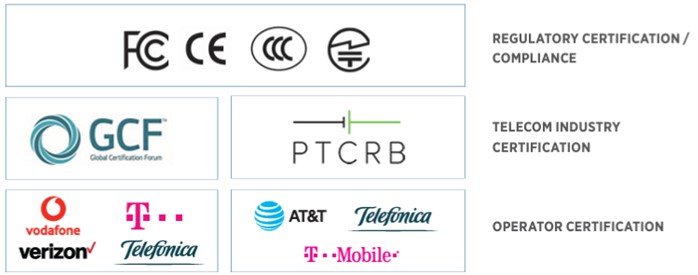
Figure 3 – Categories of certification required for cellular connected devices (Source GSMA)
After decades of helping customers design and manage connected cellular devices in the field, the best cellular technology (Modem + SIM + Network combo) in any given situation is the one that provides “adequate reliable coverage” for each and every monitored asset, in each and every fleet, in each and every country. LTE-M and NB-IoT are good cellular technologies but still not strong from a global coverage perspective, and as it states in this highly recommended reading from Qualcomm, “global data connectivity using LTE-M and NB-IoT is a distant dream”. Both NB-IoT and LTE-M provide unique advantages for connected assets, but neither technology can compete with Cat1.bis from a global coverage perspective. Ultimately, your needs will dictate which wireless technology (RAT – Radio Access Technology) is ideal for your project (may not even be cellular) but guaranteed there is no “one technology to rule them all”. The concept of single SKU truly globally connected devices is transitioning from hype to reality, and now that the M2M/IoT industry has climbed the slope of enlightenment and is entering the plateau of productivity, it is very positive to see numerous Cat1.bis chipsets/modules coming to the market from all the main module vendors where “true global coverage” capability can be paired with very cost effective and low power modems, leaving a situation where Cat1.bis could now become the coverage/cost king of globally connected devices.
For any questions regarding the discussed content, please don’t hesitate to reach out to the team via email at sales@txwireless.com. Please visit our connect device capabilities page to learn more about how TxWireless can help you with your connected device requirements.
Author:
Adrian Burns – Chief Architect at TxWireless















